The History of Brain Scans in Brain Research / Neurology & Psychotherapy
Neurotechnological Brain Scans in
Neurology & Psychotherapy
Another major break through in brain research happened in 1929. Hans Berger demonstrated the first human electroencephalograph machine (E.E.G.).
This was a machine that measured and records the electrical activity of the brain. It also can record this information. Electrodes are placed on specific sites of the scalp. The electrical impulses of the brain are detected and recorded.
The frequency is the number of times a wave passes within a second. A pen is hooked up to an instrument and records on graph paper the small electric currents of the frequency. If a frequency is shown, and it is excessive or deficient, mental performance will suffer. Amplitude and volume are also measured in the E.E.G..
This test is now used as a diagnostic test in psychiatry and neurology. It is a common tool used today in brain research. The E.E.G. is technically not a brain scan. It is a useful way of non-invasively observing signals from the brain. It can show how long the brain takes to process a stimuli or show if a person is asleep or awake.
It is limited in that it cannot tell us what region of the brain is doing what, or the anatomy of the brain (Breggin, 1979). The major role that the E.E.G. has is determining whether or not a person has epilepsy. It is a brain scan to determined the seizure activity.
Sometimes, it is used for the assessment of brain damage or to assess brain death. The test is in real time. This means that the test is sensitive to brain abnormalities only while it is being administered.
Also, those who do have epilepsy will have a normal E.E.G. brain scan. This is an excellent tool to use with other brain scans to get a bigger picture of what is going on in a patients brain (Hopkins Clinical Neurology, 1993).
The CAT (or CT) brain scan was developed in the 1970’s. CAT stands for Computerized Axial Tomography Scan. It combines two dimensional x-ray images to show a 3-dimensional scan image of the body organs which can include the brain. A donut-shaped x-ray machine moves around the subject to take many pictures. This scan can detect some brain damage and show local changes in cerebral blood flow (this measures brain activity).
The CAT scan is considered a low risk procedure. The amount of radiation a person receives is minute. The C.A.T. scan is available at almost every acute care facility in the United States today. It is fast and is preferable over the M.R.I. for acute cases of trauma.
It is best for intracranial bleeding or fractures. This test is more sensitive than the M.R.I. for life threatening identification in the first 72 hours of the injury (Radiological Association of North America, 2005).
See More Information & Techniques on Brain Awareness Therapy Below:
Brain Awareness: A Brief History of Human Brain Research
Brain Awareness Yoga: Happy Brain Yoga Activity
Why Therapists Need to Understand The Human Brain
Red Ribbon Week Drugs Hurt Your Brain Game Activity
Red Ribbon Week Healthy Brain Awareness Game Activity
Brain Building Activities for All Ages
Disclaimer: This website and its content is intended for trained licensed mental health professionals and school certified mental health professionals to use for their clients / students at their own discretion.
*If you ignore the disclaimer above are using these techniques on yourself and you feel any discomfort or upset it is highly suggested that you seek out a licensed mental health professional immediately.
"Beyond Art Therapy" is the concept from Dr. Stangline that combines all creative fields in therapy. It is not the traditional "art therapy" but goes beyond to include sand tray therapy, play therapy, mindfulness, meditation, color therapy, cognitive behavioral therapy, and a vast majority of other therapies.
For any other type of mental health emergency call your local 911 / Police Number immediately.
Dr. Stangline does not offer advice / suggestions to anyone who is not a professional mental health provider, or a student who is studying this field and has questions about mental health programs of study.
See our Exciting Selection of eBooks:
Award Winning:
Creative Counseling 101 eBook
Our Best Seller!
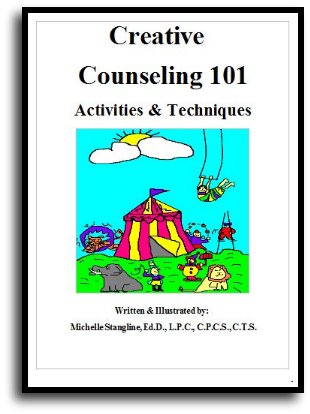
Step By Step Therapy:
Learn how to be a more Creative Therapist with the Book that started it all!
- Graduate School Counseling book used by hundreds of graduate counseling students!
- Includes full color reproducible worksheets with most activities.
- Winner of the Counselor Writer of the Year Award, 2011, Georgia Regional Award
Download Your Copy Today Only $39.95:
See Creative Counseling 101 eBook Information Here:
Get the Set
of all four
eBooks for only $98.95:
An incredible collection of how to do therapy eBooks!
A $159.80 Value,
You Save Over $60!
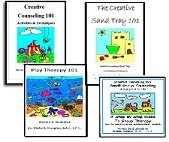
Get your complete set of the Creative Counseling 101.com eBooks by Dr. Michelle Stangline for only $98.95, that's less than $25.00 per eBook (Regular Price is $39.95 for each eBook.).
Your complete set includes:
- Creative Counseling 101
- Creative Group Counseling 101
- Creative Play Therapy 101
- Creative Sand Tray 101
For more information click the link below:
See Complete Set of eBooks For Sale Here:
New!!! "Beyond Art Therapy" 101 eBook
Over 300 pages of Beyond Art Therapy activities and techniques. Learn what I teach graduate counseling students!
See the link below for more information.
Only $39.95
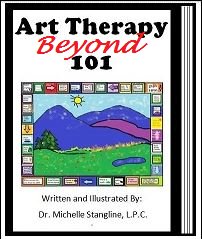
See More Invividual eBooks For Sale:
Sand Tray Therapy 101 eBook:
Learn how to do Sand Tray Therapy or enhance your skills.
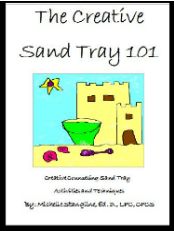
Play Therapy 101 eBook
Learn how to do play therapy or enhance your skills.
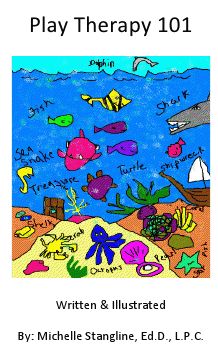
Small Group Counseling eBook For Sale:
Learn how to do creative group therapy and enhance your skills.
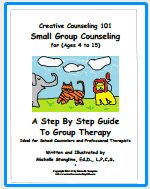
School Counselor Guidance Lesson & Social Stories eBook for sale:
Get a year's worth of school counselor guidance lessons with "Creative Warm & Fuzzy Classroom Guidance Lessons eBook". Introduce your students to the "Warm & Fuzzy Way". Click the link below for more information:
Warm & Fuzzy School Counselor Guidance Lessons eBook
